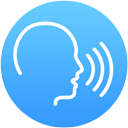







By choosing the correct lane and positioning your car in the correct place at the correct time, you increase accessibility, traffic safety and also make it easier for other road users to plan their driving.
When positioning your car you must also leave sufficient space between your car and pedestrians, cyclists and parked cars. The minimum margin should be at least the width of a car door.
 Always pass cyclists, pedestrians and parked cars with a suitable safety margin
Always pass cyclists, pedestrians and parked cars with a suitable safety margin
You may only turn at a junction if it can be done without endangering or obstructing others driving in the same direction as you. Pay special attention to the traffic behind you.
Before turning right at a junction you should position the car close to the right-hand side of the road. Stay close to the right-hand side of the road after completing the turn.
Before turning left at a junction you should position the car as close to the left edge of your lane as possible. This maximises your visibility and makes it easier for other drivers to see your car and to pass you on the right. Complete the turn on the right-hand side of the road.
Before turning left at a junction on a one-way street you should position the car as close to the left-hand side of the road as possible. Complete the turn on the right-hand side of the road.
When turning left at a junction you have a duty to give way to all oncoming traffic.
 You have a duty to give way to all oncoming traffic when turning left at a junction
You have a duty to give way to all oncoming traffic when turning left at a junction
When turning onto a road with multiple lanes going in the same direction, you should turn in the way that is most appropriate considering the surrounding traffic and where you intend to go.
Roundabouts increase traffic safety by reducing speeds and increase accessibility by evening out the traffic flow.
When you are about to enter a roundabout you must give way to traffic already on the roundabout. Reduce your speed well in advance of the roundabout and try to find a gap in traffic to move into. Do not stop if it can be avoided as stopping creates traffic congestion.
 You must give way to traffic on the roundabout
You must give way to traffic on the roundabout
How you should position your car before you enter, and once you are on, the roundabout depends on whether you are going to turn right, drive straight on or turn left.
There is no requirement to indicate when entering a roundabout, as there is only one choice of driving direction – traffic always travels counterclockwise in roundabouts. However, it is recommended to indicate anyway as it makes it easier for other drivers to understand your intentions.
 How you should position your car before you enter the roundabout depends on whether you are going to turn right, drive straight on or turn left
How you should position your car before you enter the roundabout depends on whether you are going to turn right, drive straight on or turn left
If a roundabout has several lanes, you can initially position the car closer to the centre of your lane.
Click on the picture below to watch Transportstyrelsen's instructional video (Swedish only) about driving in a roundabout.
When driving in towns and cities, roads often have several different lanes leading to different destinations. It is important to plan where your lane position in good time.
Usually you should drive in the right-hand lane. But in the following situations, you can choose the most suitable lane for your destination:
Practically, this means that when driving in densely built-up areas, you can choose the most suitable lane for your destination. The rules are designed this way to minimise the number of lane changes and thus the number of accidents (lane changes in heavy traffic increase the risk of accidents).
 You can usually choose the most suitable lane for your destination when driving in densely built-up areas
You can usually choose the most suitable lane for your destination when driving in densely built-up areas
At junctions, there are often lane assignment signs above the road and lane arrows on the roadway that you should follow. They show where different lanes lead and in which directions you are allowed to turn. If you have chosen the wrong lane you should stay in it, turn around at a suitable location and then drive back to the junction.
![]()
Lane assignment sign
Unexpected last-minute lane changes can surprise other road users and often lead to accidents. If you are driving in a lane that is delimited by a solid lane line, you must follow the directions shown by the white lane arrow on the road.
 At junctions, there are often lane arrows on the roadway that show in which directions you are allowed to turn
At junctions, there are often lane arrows on the roadway that show in which directions you are allowed to turn
On roads that are not one-way, there are lanes for traffic travelling in the opposite direction. These are of course prohibited to drive in. Solid lines and other instructions make it easy to determine which lanes run in the opposite direction and are therefore prohibited to drive in.
Join today and get access to over 1,400 theory questions, unlimited tests and all of The Licence Game!
Below you can read what our members are saying about iKörkort.nu.
You are normally not allowed to use lanes designated for public transport vehicles (bus lanes). They are reserved for vehicles in regular service and, if the lane is located to the right in the direction of travel, cycles and class 2 mopeds.
It is, however, permitted to cross public transport vehicle lanes and other lanes designated for a particular type of vehicle. For example, if you drive in the left lane on a road with three lanes, you may cross the middle lane, even if it is a public transport vehicle lane, to get to the right lane.
Note that lane arrows on the roadway after a bus lane ends do not apply to vehicles coming from the bus lane if the bus lane continues on the other side of the junction. This means, for example, that a bus can continue straight through a junction, even though the bus drove in a lane which, before the junction, was solely intended for right- or left-turning traffic.
 Always assume that buses can continue straight through junctions, even though they were in a lane which, before the junction, was solely intended for right- or left-turning traffic
Always assume that buses can continue straight through junctions, even though they were in a lane which, before the junction, was solely intended for right- or left-turning traffic
Never position yourself nearby large vehicles when driving through sharp turns and roundabouts. Such vehicles often have an expanded turning radius and may need to take up more than one lane when turning. If you drive beside a large vehicle as it is turning your car might be damaged. Instead, lower your speed and allow the large vehicle to drive into the turn or roundabout ahead of you.
A reversible lane is a lane whose direction of travel is determined by traffic signals. This means that the direction of travel can change on roads with reversible lanes. Traffic flow and the time of day usually determine the direction in which traffic is currently allowed to proceed.
 On roads with reversible lanes, the direction of travel can change depending on traffic flow and the time of day
On roads with reversible lanes, the direction of travel can change depending on traffic flow and the time of day
Before changing lanes on a road where the speed limit is 70 km/h or less, you must first consider whether it is even necessary. Lane changes in heavy traffic increase the risk of accidents and should preferably be avoided. Zig-zagging back and forth between lanes to get past a queue or to pass cars traveling at the speed limit is not allowed.
During a lane change, both the driver who is going to change lanes and drivers in the adjacent lane have responsibilities and obligations.
The driver who is going to change lanes may only carry out the lane change if it can be done without endangering or unnecessarily obstructing other road users. Drivers in the adjacent lane must, in turn, adapt their speed to facilitate the lane change.
 Lane changes in heavy traffic increase the risk of accidents and should preferably be avoided
Lane changes in heavy traffic increase the risk of accidents and should preferably be avoided
The most suitable place to change lanes is well in advance of or immediately after junctions. Just before junctions, solid lines usually prohibit lane changes.
* The blind spot is the area not covered by any mirror. You check the blind spot by briefly glancing over your shoulder (in the direction you are moving the car).
If another driver signals that he or she wants to change to your lane you should help the driver by reducing your speed, thus creating a larger gap between you and the vehicle in front.
Sometimes the zipper merge must also be applied, for example when two lanes merge into one. The zipper merge requires mutual consideration and means that one vehicle at a time from each lane is allowed to proceed – first one from the right, then one from the left, then one from the right and so on.
 The zipper merge requires mutual consideration
The zipper merge requires mutual consideration
You may only turn around or reverse if it can be done without endangering or obstructing other road users.
If you have to turn around in city traffic, there are three options:
Of the three options, driving around the block is the safest option. It minimises the risk of you surprising or being surprised by other road users.